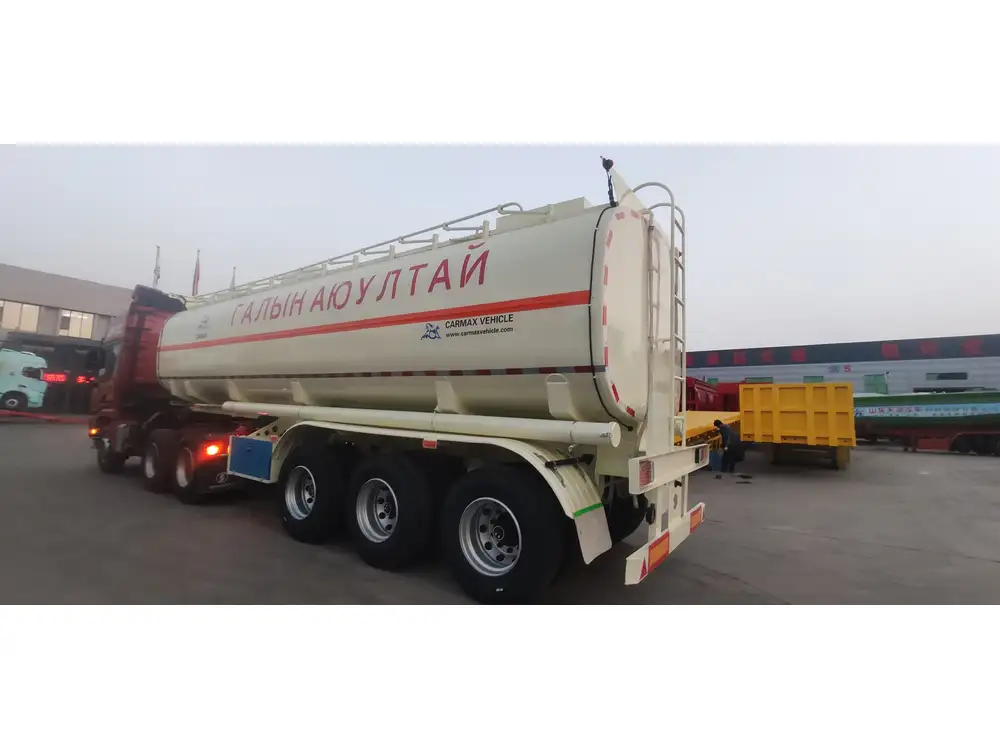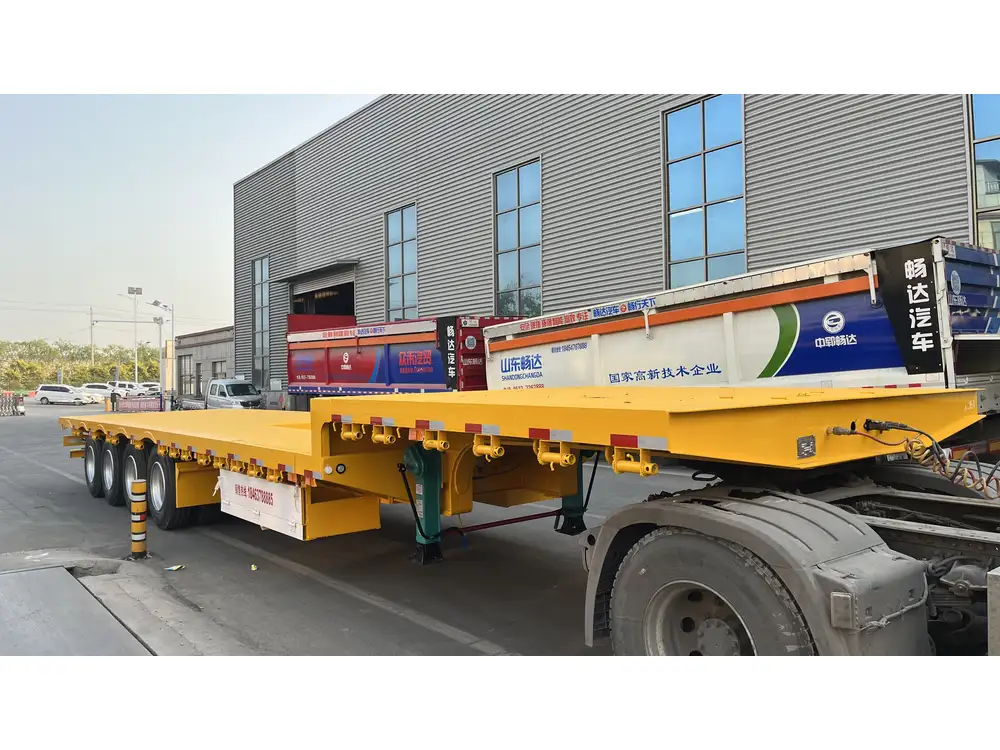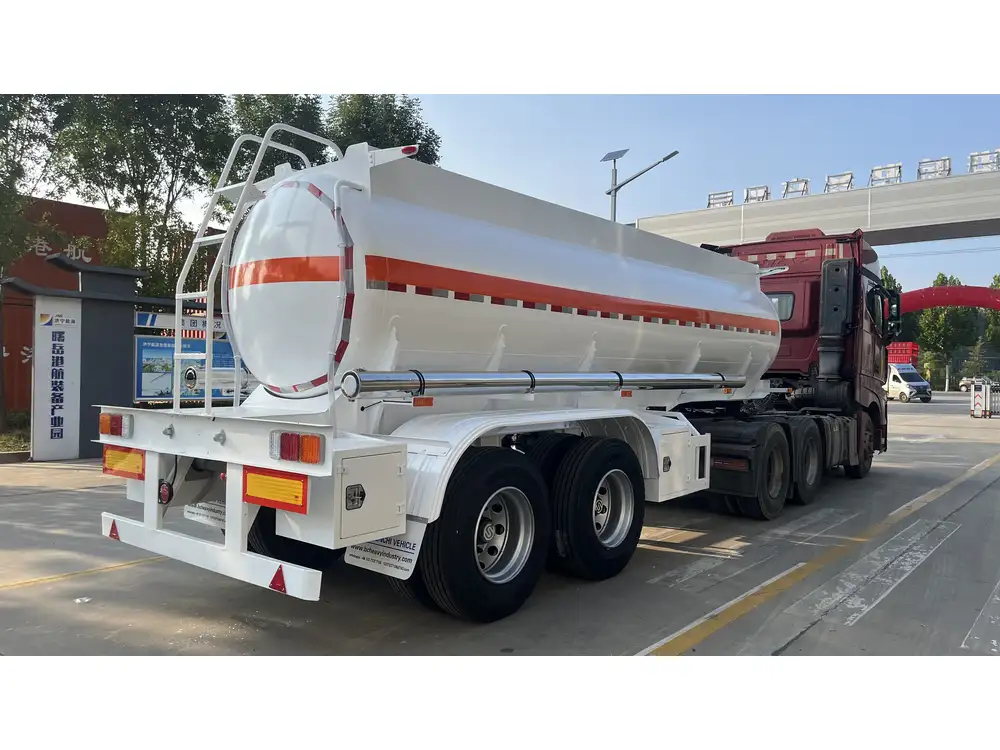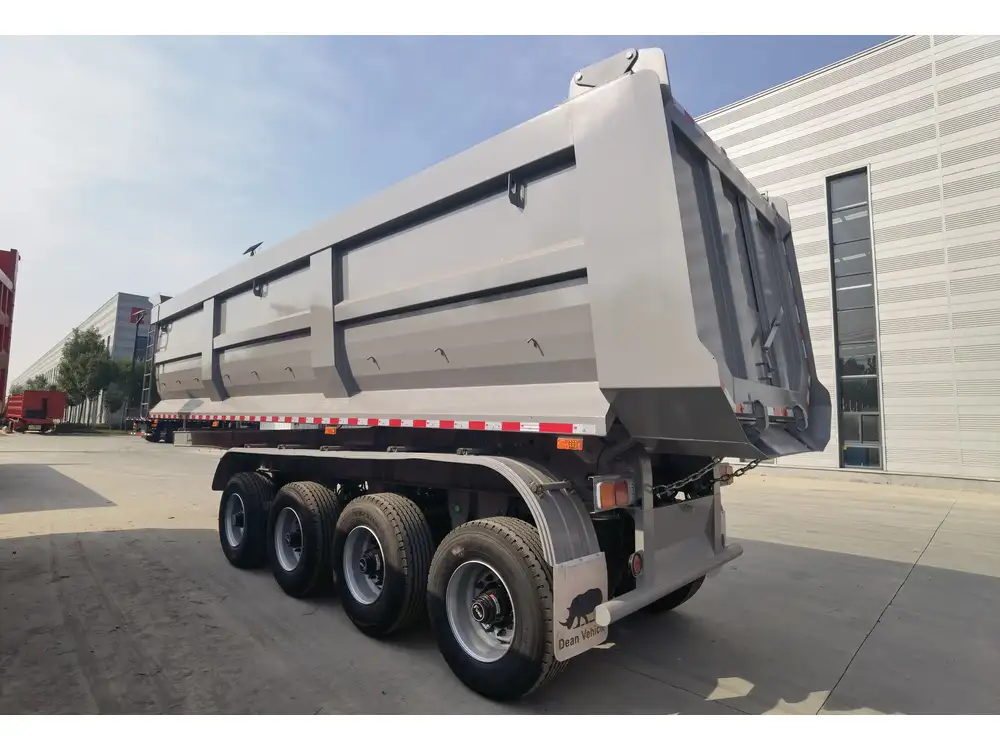In the dynamic world of logistics and transportation, the length of a container truck plays a pivotal role in ensuring efficiency, compliance, and cost-effectiveness. At CarMax Vehicle, we recognize the critical importance of selecting the appropriate container truck length to meet diverse transportation needs. This comprehensive guide delves into the various aspects of container truck lengths, providing valuable insights to help businesses optimize their shipping operations.
Standard Container Truck Lengths
Container trucks come in a variety of lengths, each designed to accommodate different types of cargo and meet specific regulatory requirements. Understanding these standard lengths is essential for selecting the right vehicle for your transportation needs.
| Container Truck Length | Typical Uses | Dimensions |
|---|---|---|
| 20 Feet | Small to medium cargo loads, urban deliveries | Approximately 20 ft (6.1 m) |
| 40 Feet | Large cargo loads, intercity transportation | Approximately 40 ft (12.2 m) |
| 53 Feet | Bulkier shipments, long-haul freight | Approximately 53 ft (16.15 m) |
These standard lengths offer flexibility in handling various types of cargo, ensuring that businesses can choose the most efficient option for their specific requirements.
Factors Influencing Container Truck Length
Several factors influence the choice of container truck length, each contributing to the overall efficiency and effectiveness of transportation operations.

1. Cargo Type and Volume
The nature of the cargo being transported significantly impacts the choice of truck length. Bulkier items or larger volumes necessitate longer trucks to maximize capacity and minimize the number of trips required.
2. Regulatory Compliance
Different regions and countries have specific regulations governing the maximum allowable truck lengths. Ensuring compliance with these regulations is crucial to avoid penalties and ensure smooth transit across borders.
3. Road Infrastructure and Accessibility
The infrastructure of the roadways, including bridge heights, weight restrictions, and turning radii, influences the feasible truck lengths. In areas with restrictive infrastructure, shorter trucks may be more practical.

4. Operational Efficiency
Optimizing truck length for operational efficiency involves balancing load capacity with maneuverability. Longer trucks can carry more cargo but may be less maneuverable in tight spaces, affecting delivery times and fuel consumption.
Comparative Analysis of Container Truck Lengths
To better understand the differences between standard container truck lengths, let’s explore a comparative analysis focusing on key attributes such as capacity, maneuverability, and suitability for different transportation scenarios.
| Attribute | 20 Feet | 40 Feet | 53 Feet |
|---|---|---|---|
| Cargo Capacity | Lower capacity, ideal for smaller loads | Moderate capacity, versatile for various loads | High capacity, suited for large volumes |
| Maneuverability | Highly maneuverable, suitable for urban areas | Balanced maneuverability for both urban and intercity routes | Less maneuverable, better for long-haul |
| Fuel Efficiency | Generally more fuel-efficient due to lighter weight | Moderate fuel efficiency | Lower fuel efficiency, higher operational costs |
| Regulatory Constraints | Fewer restrictions, easier compliance | Subject to intercity regulations | Strict compliance requirements for certain regions |
This comparison underscores the importance of selecting the appropriate truck length based on specific logistical needs and operational contexts.
Benefits of Choosing the Right Truck Length
Selecting the optimal container truck length offers numerous benefits that enhance the overall efficiency and profitability of transportation operations.

1. Cost Savings
Choosing the right truck length minimizes fuel consumption and reduces the number of trips required, leading to significant cost savings over time.
2. Enhanced Efficiency
Proper truck length selection ensures maximum cargo utilization, reducing the frequency of deliveries and improving overall operational efficiency.
3. Regulatory Compliance
Adhering to regional and national regulations regarding truck lengths prevents penalties and ensures seamless transportation across different jurisdictions.

4. Improved Safety
Appropriate truck lengths contribute to safer transportation by ensuring that the vehicle is not overloaded and remains manageable on the road, reducing the risk of accidents.
CarMax Vehicle’s Range of Container Trucks
At CarMax Vehicle, we offer a diverse range of container trucks designed to meet the varying needs of our clients. Our lineup includes:
- CarMax Compact: Ideal for urban deliveries and smaller cargo loads, offering high maneuverability and fuel efficiency.
- CarMax Standard: A versatile option suitable for a wide range of transportation needs, balancing capacity and operational efficiency.
- CarMax Maxi: Designed for bulkier shipments and long-haul freight, providing maximum cargo capacity and robust performance.
Each model is engineered with precision and built to withstand the demands of modern logistics, ensuring reliability and excellence in every journey.
How to Choose the Right Container Truck Length
Selecting the appropriate container truck length involves a careful assessment of various factors to ensure alignment with your business’s transportation needs and objectives.

1. Assess Cargo Requirements
- Volume and Weight: Determine the average volume and weight of your shipments to select a truck that can accommodate your typical load sizes.
- Type of Cargo: Consider the nature of your cargo—whether it is bulk, fragile, perishable, or requires specialized handling—and choose a truck length that facilitates safe and efficient transport.
2. Consider Regulatory Requirements
- Local and International Laws: Familiarize yourself with the trucking regulations in the regions you operate, including maximum permissible lengths and weight limits.
- Permits and Licensing: Ensure that your chosen truck length complies with the necessary permits and licensing requirements to operate without legal complications.
3. Evaluate Road Infrastructure
- Infrastructure Compatibility: Assess the road conditions, bridge heights, and urban infrastructure in your operating areas to ensure your truck length is compatible and can navigate effectively.
- Accessibility: Consider the accessibility of loading and unloading points, ensuring that your truck length does not impede efficient operations.

4. Balance Cost and Efficiency
- Fuel Consumption: Select a truck length that offers the best balance between cargo capacity and fuel efficiency to minimize operational costs.
- Maintenance and Upkeep: Consider the maintenance requirements of different truck lengths, ensuring that your choice aligns with your budget and maintenance capabilities.
Future Trends in Container Truck Lengths
The transportation industry is continually evolving, driven by technological advancements and shifting market demands. Several emerging trends are shaping the future of container truck lengths:
1. Sustainability and Fuel Efficiency
There is a growing emphasis on sustainability, pushing manufacturers to design longer trucks with enhanced fuel efficiency features. Innovations such as hybrid engines and lightweight materials are becoming standard to reduce the environmental impact of transportation.

2. Autonomous and Connected Trucks
The advent of autonomous driving technology is influencing the design and length of container trucks. Self-driving trucks require precise engineering to ensure safety and efficiency on the roads, potentially leading to changes in standard truck lengths and configurations.
3. Modular and Flexible Designs
Future container trucks are likely to adopt modular designs, allowing for adjustable lengths and adaptable configurations based on cargo needs. This flexibility enables businesses to tailor their transportation solutions dynamically, enhancing operational agility.
4. Enhanced Safety Features
Advancements in safety technologies are prompting the development of trucks with integrated safety systems, such as collision avoidance and automated braking, which may influence the optimal length for maximum safety and performance.

Maximizing the Benefits with CarMax Trailer
Choosing CarMax Trailer from CarMax Vehicle means partnering with a manufacturer committed to delivering superior quality and tailored solutions. Our expert team assists you in selecting the optimal truck length, ensuring that your transportation needs are met with precision and reliability. We offer customizable options, comprehensive support, and innovative designs that keep your logistics operations ahead of the curve.
Conclusion
The length of a container truck is a fundamental factor that impacts various aspects of transportation, from cost and efficiency to regulatory compliance and safety. At CarMax Vehicle, we understand the intricacies involved in selecting the right truck length and offer a range of solutions designed to meet your specific needs. By carefully assessing your cargo requirements, regulatory environment, and operational goals, you can optimize your logistics operations, driving success and growth for your business.
Frequently Asked Questions
1. What is the most common container truck length used in North America?
The most common container truck lengths in North America are 40 feet and 53 feet. The 40-foot trailers are widely used for a variety of cargo types, while the 53-foot trailers are popular for bulkier shipments and long-haul transportation due to their increased capacity.
2. How does container truck length affect fuel efficiency?
Container truck length directly influences fuel efficiency. Generally, longer trucks can carry more cargo per trip, reducing the number of trips needed and thereby improving overall fuel efficiency. However, longer trucks may consume more fuel per mile due to their increased weight and aerodynamic profile.
3. Are there specific regulations for container truck lengths in urban areas?
Yes, urban areas often have specific regulations regarding container truck lengths to ensure safety and minimize traffic congestion. These regulations can include maximum allowable lengths, weight limits, and restrictions on routes. It’s essential to consult local transportation authorities to ensure compliance with urban trucking regulations.
4. Can I customize the length of a CarMax Trailer to suit my business needs?
Yes, CarMax Trailer offers customization options to meet the unique needs of your business. Whether you require a standard length or a specialized configuration, our team works with you to design and build trucks that align with your specific cargo requirements and operational goals.
5. What maintenance considerations are there for longer container trucks?
Longer container trucks may require more frequent maintenance checks, particularly for components such as brakes, tires, and suspension systems, which bear the additional weight. Regular maintenance is crucial to ensure safety, reliability, and optimal performance of your truck. CarMax Vehicle provides comprehensive maintenance support to keep your fleet in top condition.



